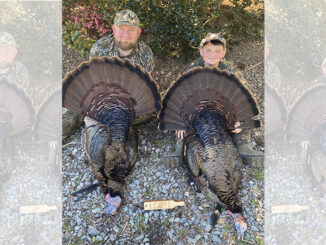
Flathead catfish migrate into the Dan and Staunton rivers from April to June to spawn, then return to the main lake in July and August.
“We target flatheads from Buffalo Creek back down to Junkman’s Curve, depending on the thermocline,” said guide Van Hughes, who depends on the lake’s thermocline to show him the proper depth to fish.
A thermocline develops in most large reservoirs during the summer. It’s a layer of water below which very little dissolved-oxygen is found. Fish live above the thermocline until fall, when cooler weather mixes oxygenated water from surface to bottom.
“You can see it on a depth-finder,” Hughes said. “The thermocline looks like a dark line. We troll baits above it for catfish, especially over structure such as trees, rocky humps or river ledges.”
Summer juvenile flatheads may range from 10 to 40 pounds, Hughes said, and smaller flatheads make better table fare.
“I caught my largest flathead (a 56-pounder) one July on the Dan (River) side,” he said.
Summertime flathead anglers usually anchor to fish at night.
“Then we drop baits to the bottom, always near some kind of structure,” Hughes said. “Structure is the key to catching summer flatheads. Trees and rocks on humps are good flathead structure. They hang out near structure because that’s where baitfish are.”
When the flatheads are biting — and Hughes often finds them stacked up — it’s difficult to leave.
“Our best big flathead night we caught 17,” he said. “Sometimes we stay until 2 a.m.”




